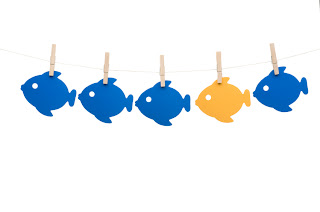
I know I'm a little slow in reacting to the Technorati State of the Blogosphere report, but I kept coming back to something I couldn't quite shake. More on that in a minute. First, let's talk about a few of the interesting tidbits about brands and blogging.
"Whether or not a brand has launched a social media strategy, more likely than not, it’s already present in the Blogosphere. Four in five bloggers post brand or product reviews, with 37% posting them frequently. 90% of bloggers say they post about the brands, music, movies and books that they love (or hate)."

Yep, folks. People are talking about you, whether you like it or not. More importantly, people are looking for information online, and when they find it, they may not realize they're on a blog. It's just a link they clicked from their Google search.
Social media users tend to label our tools and put them in buckets - blogging, microblogging, crowdsourcing, whatever. But the people that FIND information on the web aren't classifying things the same way we are. They just want to know what people are saying about the laptop they're thinking of buying, or the hotel they're thinking of staying at. When they click on a link, it may not register with them that it's a blog or a forum post or a mainstream news article online, but it's the information they're after. But they ARE looking for it, so we ought to be putting it in places they can find it and - perhaps more importantly - interact and react to it.
"Company information or gossip and everyday retail experiences are fodder for the majority of bloggers."

Which means people want to talk about you, and given no other choice, will use the information they find to make judgments about your business. It's ever more important that you as the brand are contributing your voice and perspective to the conversation, and showing that other people's viewpoints matter to you, too.
But here's my word of caution. The report is decidedly slanted - Technorati (fittingly) only surveyed bloggers for this report. I understand that they're trying to take the pulse of THEIR community - the bloggers - and understand how and why they do what they do.
But if you're a consultant or company looking at this information, be careful not to overinflate some of the findings, and recognize that they're from a plugged-in audience. Of course they're going to predict the continued growth of blogs and the demise of print - that's the world they live in. Of course they're going to believe that blogs' influence will get ever greater in the grand communications highway - it's part of the sea change that they're creating.
I believe these things - I do. I work with lots of people to understand and tap the potential of marketing through social media - blogging included - and I think blogging is a powerful, accessible medium that really has changed the face of media. But the fishbowl can make you see things through curved glass.
So I'll end by saying that once again, we all need to be mindful of the individual business value of these tools, the important factors for consideration, and how they integrate into the larger landscape. Traditional methods of communication can still be very viable, and even more powerful when enhanced with carefully selected social media tools to transform a message into a dialogue.
And the conversation is only as good as the quality of its participants. More on that later this week...


















